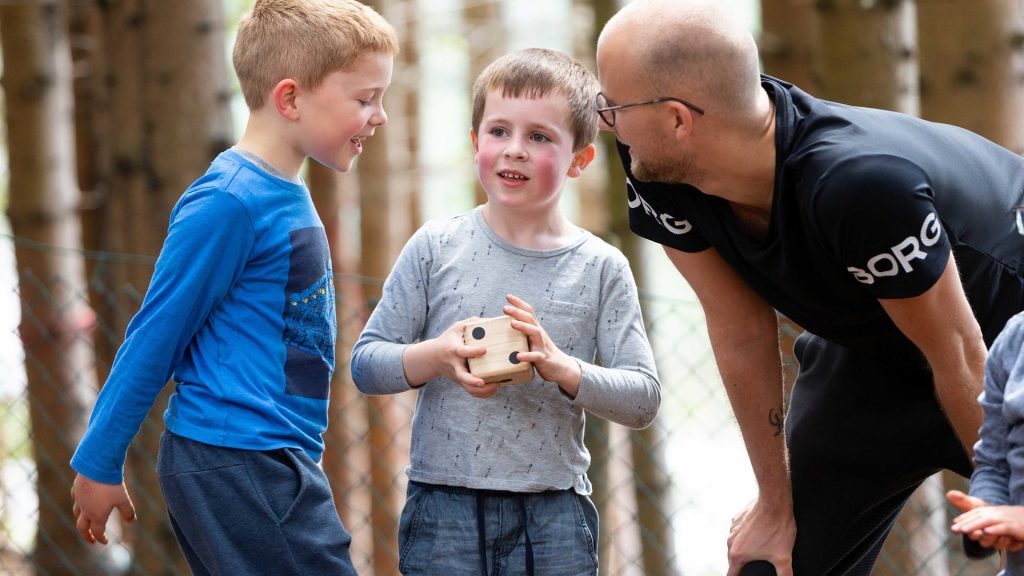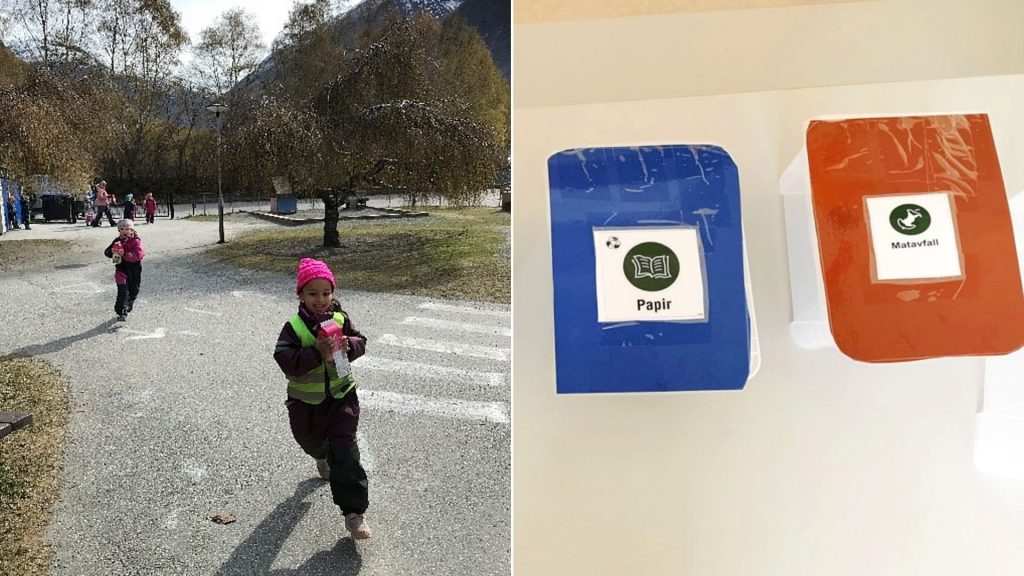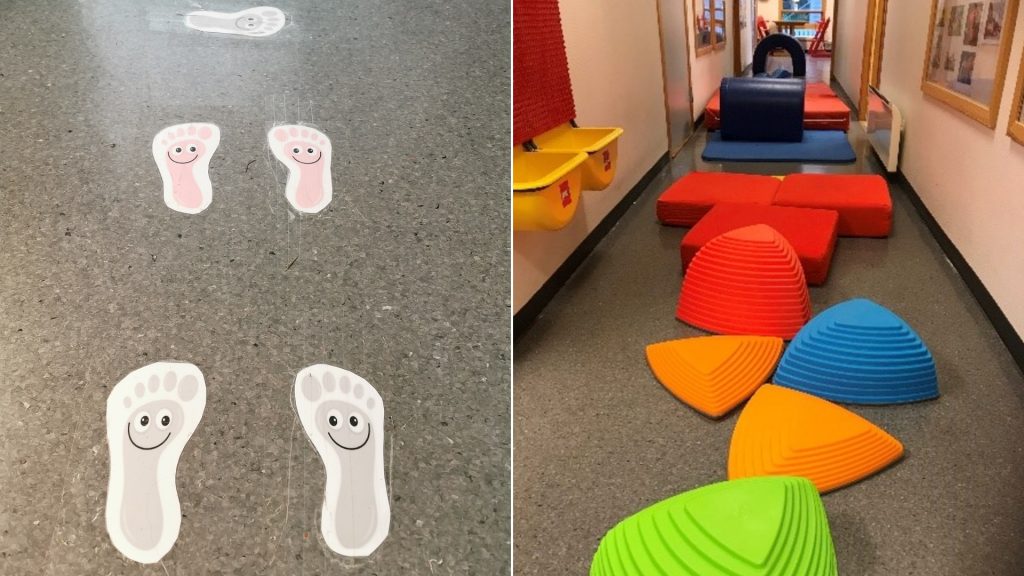Transitional situations in preschools
Many transitional situations take place throughout the preschool day. Here you can find tips on how to implement physical activity in different everyday situations. If you see any good ideas, it’s just a matter of including them in your daily life at kindergarten!
TIDY-UP
- Tidying up music: Put on the music. When the music stops, the children start tidying up and when the music stops (the adult stops it), they ‘freeze’. Start and stop the music until everything has been tidied up.
- Tidy-up die game: Roll the die. If the die lands on three, everyone shall tidy up three things and when they have finished, gather round the die again. The game continues this way until everything has been tidied up. This game works well outdoors.
- Tidy-up motor skills: Each toy is linked to a motor skill. For instance, the child crawls when tidying up cars, jumps when tidying up building blocks and dances when tidying up crayons. Preferably, allow the children to suggest activities.
- Tidy-up relay game outdoors: Divide the children into different teams and give each team a task to tidy up a specific category of toys. For instance, one team tidies up buckets, another spades and another bikes. Who can finish first? Remember that the children must sort the items in the correct place.

ACTIVITY OF THE WEEK OR DAY
- Emphasis can be placed on a particular motor skill each day/week that will be used during different transitional situations, in games and activities or otherwise during the course of the day. For instance, if the week’s activity is to jump, the children (and the adults) can jump in different ways when moving around. For instance, the children can jump from the cloakroom up to the table at mealtimes. Activities, such as crawling, walking backwards or sideways and taking small steps (heel-to-toe), etc. can also be used.
GROUP TIME IN THE CLOAKROOM
Add physical activity to group time. The toolbox provides you with tips for activities that are suitable in the cloakroom or department/room if you filter/tick off ‘small space’.
- For a good start of the preschool day, a short morning exercise session would be refreshing. For instance, a short dancing session, some mini movement videos or anything else suitable for the department/room. Many children find it easier to concentrate and work on various table activities after physical activity.

PRACTICAL TASKS:
- Transportation of milk: Does the ‘milk truck’ deliver your milk? Instead of the adults moving the milk from the milk truck to the fridge, the children can do it. They think it’s great! Here are some tips on how to do it:
- Let the children bike the milk in with bicycle trailers
- Let the children carry the milk in
- Let the children pull the milk on toboggan sledges
- Milk relay game: divide the children into teams. The first child in the team runs in with a milk carton and runs back to their team. The next child in the row carries the next carton. The game continues until all the milk is in the refrigerator.
- Garbage disposal: Let the children dispose of garbage with an adult. Here are a couple of tips on how to do this:
- Let the children bike with refuse bags to the container.
- Let the children carry the refuse in pairs to the container.
- Facilitating physical activity: include the children in the preparation and facilitation of physical activity. For instance, let the children pick various types of equipment from the shed to make an obstacle course.

Indoor physical space
Toys and materials indoors invite children to be physically activity. The following are suggestions for materials and activities that are suitable for the department/room.
- Tape on the floor: e.g. to form various types of tracks to balance on, hopscotch, a variety of pictures of hands and feet to follow, numbers and letters.
- Slides with images of activities.
- Slides with yoga exercises.
- Ball tracks/pipes.
- Make targets to throw items at with the children (throw soft balls or bean bags).
- Dice, for example one die with numbers and one die with animals to imitate. If one die lands on five and the other lands on a frog, the children do five frog leaps.
- Large crates, boxes or building blocks to build and play with
- Many preschools have cushions and various types of equipment in a storage cupboard. Is it possible for some of this equipment to be placed in a separate room, or in a corridor or corner of the department/room, so the children can use it whenever they want? It may be important to have clear rules on what is allowed and what is not to keep it tidy and within an acceptable noise level.

On excursions
- The lost lunch box: Children like hide and seek games. A variant of hide and seek is hiding the children’s lunch boxes. When it’s time for lunch, all the children must search for their own lunch box. If the children find the lunch box of another child, they must pretend that they have not seen it and continue searching until they find their own. If the lunch boxes are put together at the preschool before the excursion, they can be name labelled. This also trains the children ‘to read’ their own name.
- Motor challenging excursions: If the excursion is taking place in an area with no/little traffic, the excursion can be made extra exciting by incorporating obstacles with tasks along the way. Is there a little wall to balance on? Is it possible to climb over a bench? Is it possible to do different motor exercises between the lamp posts? For instance, run as fast as possible from one lamp post to the next. The children should also make their own suggestions of activities.

